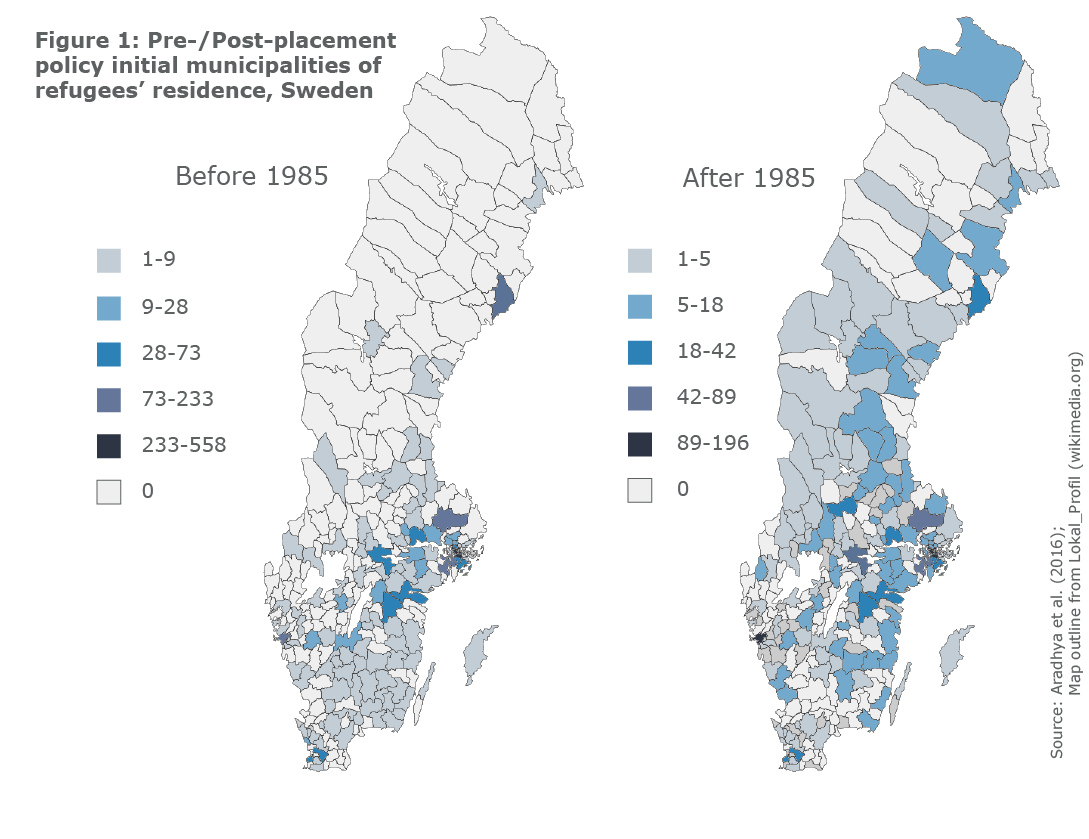Refugees’ post-migration choices about where to call home have stumped many a policymaker. In 2015, it was refugees’ “irregular secondary movement” that rendered Europe’s Dublin system obsolete. Yet it is refugees’ voluntary relocation away from ethnic enclaves that signals successful integration. A closer look at a Swedish policy exposes motivations behind them and how even light interventions can affect outcomes. In 1985, refugee settlement was changed from open to assigned to promote integration by mitigating the growth of established ethnic enclaves. The result is a much less concentrated pattern of initial settlement (Figure 1).

What is important is how the change affected secondary residence decisions. Before the intervention, having neighbours from one’s home country had no effect on later decisions to relocate. Afterwards, for every 110 co-national neighbours, the probability of relocating increased by 22 percentage points. Why wasn’t this detected before? We had to distinguish between neighbours from refugees’ home country and their home region [1]. The former may reflect some common experience, but the latter better captures cultural affinities. Imagine Kurds from Turkey or Iran who thanks to home-country conflicts prefer to live alongside other Kurds but not Turks or Persians. Thus, ethnic conflicts in the sending country may manifest themselves in immigrants’ residential choices in the host country. Whether or not to encourage relocation, the drivers of post-migration residence decisions are key to good asylum policies. Otherwise, carefully crafted common asylum systems could be swiftly undermined.
Kirk Scott, Lund University, Sweden
[1] Aradhya, Siddartha, Hedefalk, Finn, Helgertz, Jonas and Scott, Kirk 2016 (forthcoming). Region of Origin: Settlement Decisions of Turkish and Iranian Immigrants in Sweden, 1968 – 2001. Population, Space and Place.